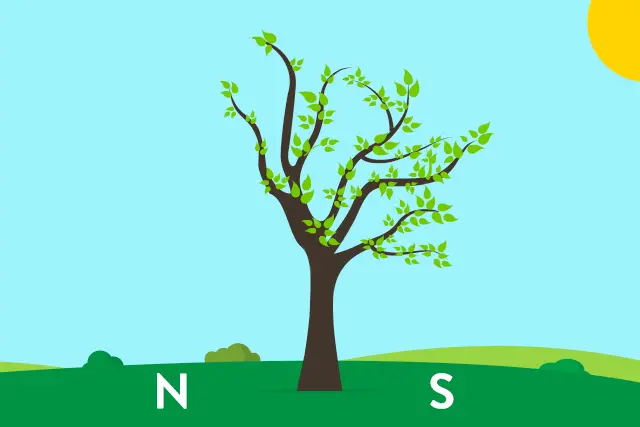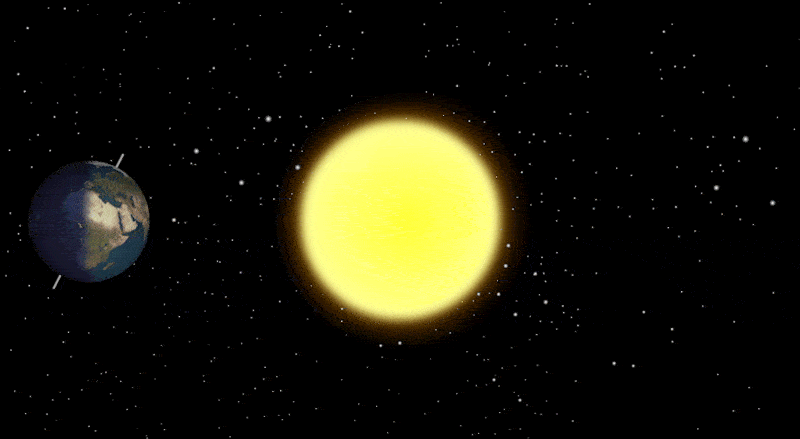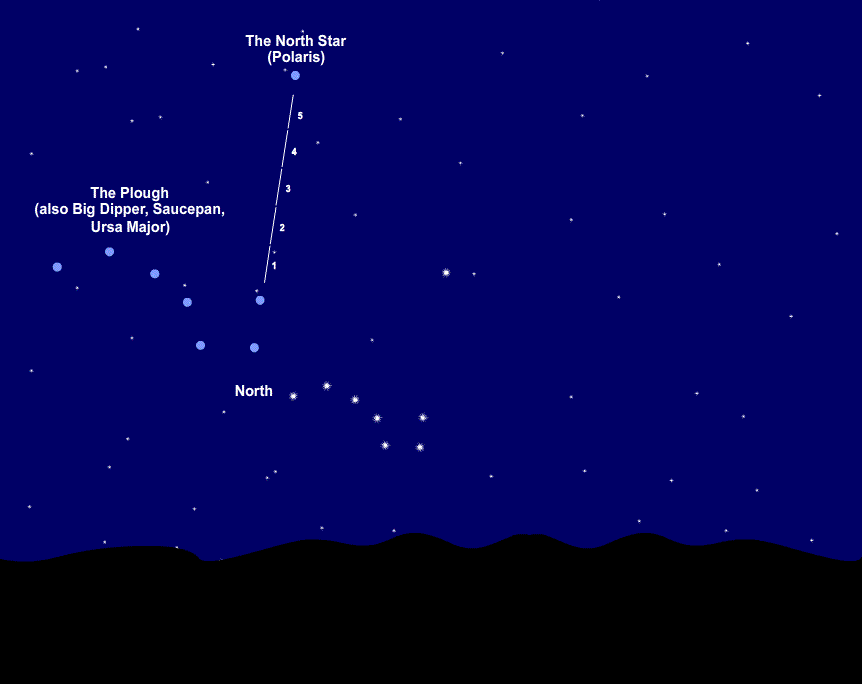If you are an avid off the grid camper or adventurer, knowing how to navigate without GPS will not only be fun and come in handy, but may even save your life.
Make no mistake, GPS is amazing but fallible. Batteries die, phones break, connections are lost. Before you know it, your life-saving GPS has zero use for you.
This is where knowing how to navigate with the stars, sun or even trees comes in handy.
Which hemisphere do you live in
Throughout this article How to navigate without GPS, I will frequently use the terms northern hemisphere and southern hemisphere.
It's important for you to know which hemisphere you live in, in order for this information to be accurate.
You can use this map to help figure that out. Once you know your hemisphere, keep it in mind whilst you read the rest of this article.

How To Navigate With Trees

Trees
You can gain an incredible amount of information by simply looking at the trees around you.
Like most plants, trees absolutely love the sun. If you stand about 20 m (65 feet) away from a tree and look at it, you will notice that the side which gets the most sun tends to be bushier.
In the northern hemisphere, the bushier side faces south. If you are located in the southern hemisphere, the bushier side faces north.
Moss
Moss tends to grow in shade. Therefore, the side of the tree that has the most moss is effectively facing north (in the northern hemisphere).
Be aware that while there is some truth to this technique, if you go into a forest you will see moss growing everywhere.
It's critical that you use the correct tree for this technique. A suitable tree would be:
- A tree standing alone (so it's not shaded by other trees)
- A tree standing 90° upright (if it's leaning over, damp will form on the underside, encouraging the growth of moss).
If you find a suitable tree, ignore its bottom metre (most trees have moss on the bottom as they draw moisture from the ground). Look about a third of the way up. If you see moss on one of the sides, this will point north in the northern hemisphere and south in the southern hemisphere.
How To Navigate With The Sun

The two easiest methods used when navigating with the sun are the watch method & the stick method.
The Watch Method

In the northern hemisphere, you will line the hour hand of your watch towards the sun. The point that separates the hour hand and twelve o'clock is due south - see picture above.
In the southern hemisphere, line up twelve o'clock with the sun, the point that separates twelve o'clock and the hour hand is due north.
The Stick Method

Find a long straight stick and put it in the ground (there must be full sunlight). The stick will cast a shadow. Put a small stone at the end of this shadow. Wait for at least 20 minutes (ideally an hour) and the shadow will move, place another stone at the end of this shadow.
The line joining the two stones is east-west (the first rock being west). Once you have east-west you can of course get north-south.
How To Navigate Using The Moon

The moon is visible in both hemispheres (thankfully for us travellers) and can easily be used to determine your approximate bearings.
If the moon is in its crescent phase, draw a line between the two horns. Follow the line down to the horizon.
In the northern hemisphere, this point is approximately south. In the southern hemisphere, it's approximately north.
The higher the moon is in the sky, the more accurate this method will be. Natural navigation at its finest.
How To Navigate With The Wind

Another way you can navigate without GPS is using the wind.
In some parts of the world, such as in Africa where there are tons of birds and many predators, you'll find that birds will make five or six nests (one, of course, being their real nest, the rest being decoys).
One tree can be home to hundreds of nests, and they all tend to be on one side. Birds are much smarter than you think, they build their nests on the side of the tree sheltered from the prevailing wind direction.
If the prevailing winds come from the east, the birds will build their nests on the west.
The prevailing winds in California come from the north-west for example. If you go there you'll be sure to see some trees bent over after being battered by the prevailing wind for all their lives.
This is something you'll see all over the world, so make a point of researching your next destination's prevailing wind.
How To Navigate With The Stars

Navigating with the stars is in my opinion one of the coolest ways to navigate without GPS.
The explorer Ernest Shackleton is a great example of how well navigating with the stars really works. He takes "how to navigate without GPS" to a whole new level.

In 1915, Shackleton was stranded in the Southern Ocean on nothing but a tiny wooden boat. He managed to navigate over 800 miles (1,287 km) across open ocean, using nothing but the stars. His objective? Making landfall on a tiny island of South Georgia. He hit it dead on.
Read more about Ernest Shackleton here.
When you look up at the night sky it appears that the stars continuously move, right?
Really, of course, it's the movement of the Earth that gives the stars this flickering effect. This means that if you are going to use the stars to navigate, you'll have to find a fixed point.
In the northern hemisphere, this fixed point is the North Star, Polaris. In the southern hemisphere, you'll have to locate the Southern Cross.
Finding these constellations can be quite tricky, so I'm going to teach you a few different techniques on how to find them.
Finding Polaris

Polaris is not the brightest star in the sky. But, if you know how to find it and you are in the northern hemisphere, you will always know which way north is.
You can find Polaris using one of the two constellations: the Big Dipper (or the Plough) or Cassiopeia.
The Big Dipper
The Big Dipper has "saucepan" characteristics. Look for the two stars on the 'non-handle' side. The line between them points to Polaris. It's about four times the distance between them.
Cassiopeia
Cassiopeia is shaped like a W. It circles Polaris almost exactly opposite the Big Dipper. If you follow a line from the centre of Cassiopeia you will find Polaris.

The Southern Cross
Polaris is a fixed point in the night sky only in the northern hemisphere. In the Southern hemisphere, you are going to have to locate the Southern Cross.
Imagine a line running along the longest axis. Extend this line about five times its own length. Once you've done that drop a vertical line straight down to the horizon. This point will be south.
The Southern Cross looks like this:

Conclusion
I hope you'll never have to use these natural navigation methods in a life or death survival situation. But, it goes without saying that navigating using the stars, moon or trees is a sure-fire way to connect you back with nature. Modern-day men and women so often rely on synthetic ways to understand the world and while these tools are extremely useful, they are just tools nonetheless.
The next time you go on a camping trip give these methods a tryout, navigate without GPS and let us know about your experience in the comments section below.
Please note: Most of the GIF Credits go to Natural Navigator.


